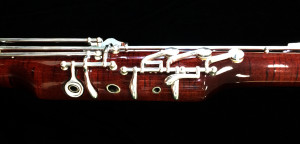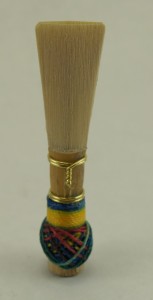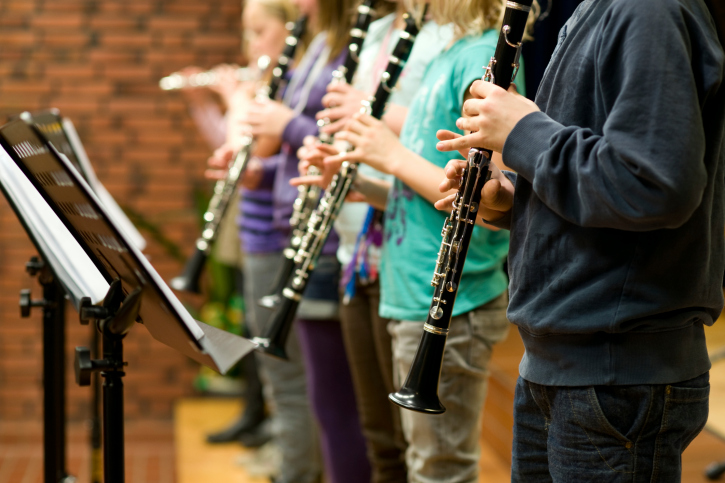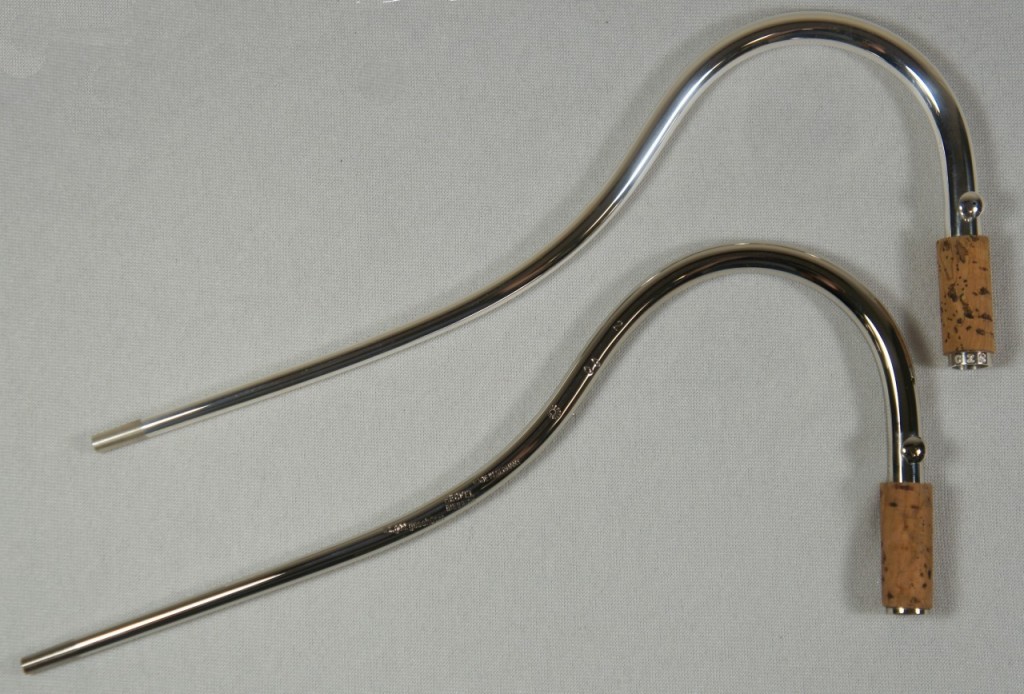The bassoon, possibly more than any other instrument, has a huge selection of possible key options. Determining the differences between some similar keys, or if you need a particular option, can be a daunting task. Here I will attempt to break down the most popular options for Heckel and Fox bassoons. Some keys conflict with others either due to the placement of the key itself or associated levers or in the way that the hole must be drilled. Please don't hesitate to call Midwest Musical Imports and ask for a bassoon specialist to discuss any of the options. This list is not comprehensive!
High D key – This is an expected standard key for a modern intermediate or professional bassoon. Useful for flicking and to hit notes from C5 and up.
High E key – also known as a G trill key. Facilitates F3-G3 trill, and to play high E. Typically this is positioned above the 1st finger on the left hand. It can also be placed “above” the Eb key between the 1st and 2nd finger.
Plateau key for third finger left hand – This is an option usually reserved for student instruments, as it shortens the reach between the 2nd and 3rd fingers of the left hand, but can hamper the tone or intonation of some notes. The “normal” configuration of this is the Third Finger Ring Key.
"Crown” style pancake key – This option changes the shape of the low E key (or “Pancake” key) from a totally round shape to a more square shape, which can facilitate the movement from the Bb key or the F# key to the E key. This can be done on only one side of the key if requested (but this is quite rare).
Rollers – Rollers can be placed on just about any key. Typically they are placed in pairs between adjacent keys, but this does not need to be the case. Besides the standard four rollers for the two pinky keys, popular places for rollers are:
- On any combination of keys for the right thumb (except for any Ab/Bb trill key)
- On the front F# key (especially when the Double Wide F# key is requested)
- On Low C and D
- On the Whisper key and C# keys
A-Whisper Bridge – A very simple mechanism that links the “A” key (for the left thumb) with the whisper key. This helps the pitch and stability and response of A4 and Bb4.
Whisper Locks – There are many different kinds of whisper lock mechanisms. Either the left or right thumb operates the mechanism to keep the whisper key closed. Please ask for details on the different kinds of locks offered.
Double Wide F# key – This option extends the from F# key across both the F and Ab keys, allowing for easier movement between all of those keys.
Offset Eb/E keys – This option takes the Eb and high E keys and shifts them down the instrument so that they Eb key is between the 2nd and 3rd fingers of the left hand, and the E key is between the 1st and 2nd finger.
High F key – Like the high E key, to facilitate a simple fingering for high F. There are several positions this key can be placed in over the left hand, depending on how the high E key is configured.
Eb Trill key – This is used to facilitate the trill from D3-Eb3. This can be placed either between the 2nd and 3rd finger on the left hand (the 3rd finger trills the key) or on the boot joint above the 1st finger of the right hand (the 1st finger trills the key). Depending on which version is selected, other keys may need to be moved from their typical locations.
Ab/Bb Trill – There are several ways in which an Ab2-Bb2 trill can be accomplished on the bassoon. Most commonly a key is placed on the boot above the back F# and G# keys for the right thumb. The technical way in which the mechanism works varies from manufacturer to manufacturer, but the player plays Ab, and trills the added key. There is an “Articulated” mechanism for this trill as well, in which the fingerings for Ab is used with an added key and the 3rd finger of the right hand accomplishes the trill (as if playing G-A, this becomes G#-A#). This articulated variety is quite uncommon.
Extra low C key – This is simply an added touch for low C positioned to the right (from the perspective of the player) of the low D key. This adds more fluid motion from lowest C-Bb without having to leverage the thumb over the low B key.
Pinky, or “French” whisper key – This is a mechanism to close the whisper key with the left hand 4th finger, placed near the low Db/C# key.
A Ring Key – The ring key standard on all modern bassoons for the 3rd finger of the right hand allows for the proper pitch of G4 by opening a second tone hole automatically. A second ring for the 1st finger of the right hand can allow an extra tone hole to open above the 1st finger to open automatically. This allows for Ab4 and A4 to be played with the low F key (4th finger right hand) instead of the need for the G key (3rd finger right hand) while maintaining proper pitch. The mechanism is automatic and allows for easier technique in the upper register. Many players still prefer the tone color of the 3rd finger version, and this option does not prevent that fingering.
Db-Eb (C#-D#) mechanisms – These are mechanisms that allow for easier movement between the lowest Db and Eb on the bassoon. The simplest mechanism is an extra touch for the left thumb that operates the Db key, freeing up the 4th finger left hand to trill the Eb key. This is only useful for a normally impossible trill. There are many ways Heckel and Fox can accomplish this particular task, so please ask us which one might be right for you. The more complicated “Articulated” mechanisms allow for one key to be used for both the low Db and low Eb, so the movement between the two notes is accomplished by just the movement of the thumb from the low C to D keys; the 4th finger does not need to move. Again, there are several ways in which this can be accomplished. The least common way this is accomplished is with an extra touch for low Eb for the left thumb, near the D key.
“Gentleman's” Model, or Divided Long Joint – This option positions the split between the long joint and the bell equal to the top of the wing joint. This means that the bell, long joint and wing joint are more similar in length, so the case for the bassoon can be made more square.
 Fox's latest professional model combines the best features of the thick and thin walled short bore bassoons! The lightness and ease of the tenor register of the thin-wall 201 with the body and power of the thick-wall 660. Acoustically this bassoon is greater than the sum of its parts.
Fox's latest professional model combines the best features of the thick and thin walled short bore bassoons! The lightness and ease of the tenor register of the thin-wall 201 with the body and power of the thick-wall 660. Acoustically this bassoon is greater than the sum of its parts.

 Bassoon reeds are expensive, either in terms of cost of buying a hand-made reed or in your own time for making your own. If you buy hand made reeds you are paying for not just the raw materials, but the years of experience of learning to make a good reed, and the time if takes to make that individual reed. If you make your own, you know how much effort and skill (and a bit of luck) goes into making a good reed. So naturally you want them to last as long as possible. Here are some really simple guidelines for extending the potential playing life of a
Bassoon reeds are expensive, either in terms of cost of buying a hand-made reed or in your own time for making your own. If you buy hand made reeds you are paying for not just the raw materials, but the years of experience of learning to make a good reed, and the time if takes to make that individual reed. If you make your own, you know how much effort and skill (and a bit of luck) goes into making a good reed. So naturally you want them to last as long as possible. Here are some really simple guidelines for extending the potential playing life of a 



